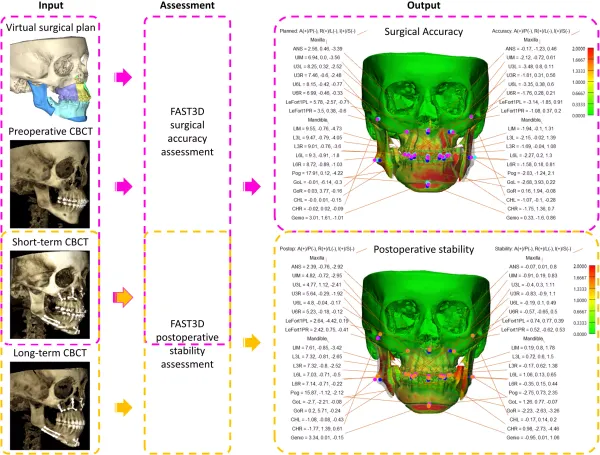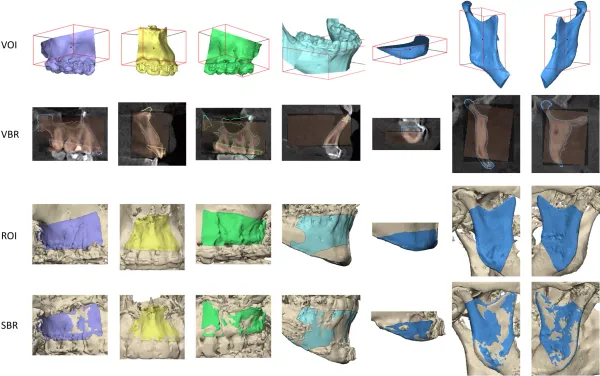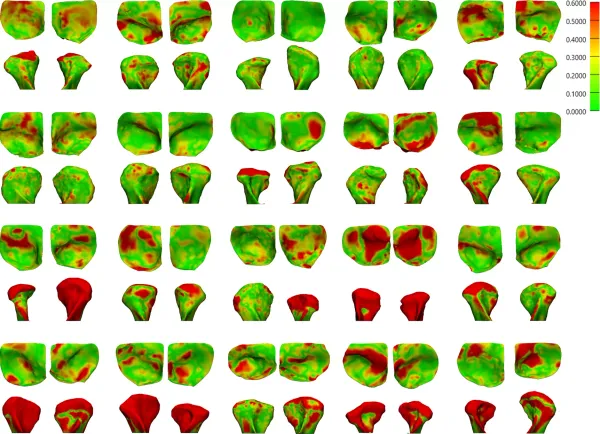Virtual Surgical Analysis: Long-Term Cone Beam Computed Tomography Stability Assessment of Segmental Bimaxillary Surgery
Authors
Holte MB, Diaconu A, Ingerslev J, Thorn JJ & Pinholt EM

Abstract
Stability assessment of orthognathic surgery is often time consuming, relies on manual re-identification of anatomical landmarks and on short-term follow-up. The purpose of the present study was to propose and validate a semi-automatic approach for three-dimensional assessment of long-term stability of segmental bimaxillary surgery. The approach was developed and validated using postoperative two weeks and two years cone-beam computerized tomography scans. The stability of the surgical outcome was calculated as three-dimensional translational and rotational differences between the short- and long-term postoperative positions of the individual bone segments. For reliability evaluation, intra-class correlation coefficients were calculated at a 95% confidence interval on measurements of two observers. Ten subjects (six male; four female; mean age 24.4 years) class II and III, who underwent a combined three-piece Le Fort I osteotomy, bilateral sagittal split osteotomy and genioplasty, were included in the study. The intra- and inter-observer reliability was excellent, range [0.82 – 0.99]. The range of the mean absolute difference of the intra- and inter-observer translational and rotational measurements were [0.14 mm (0.13) – 0.44 mm (0.50)] and [0.20˚ (0.16) – 0.92˚ (0.78)]. The approach has excellent reliability for three-dimensional assessment of long-term stability of segmental bimaxillary surgery.





